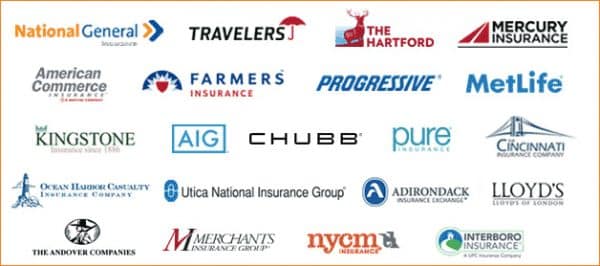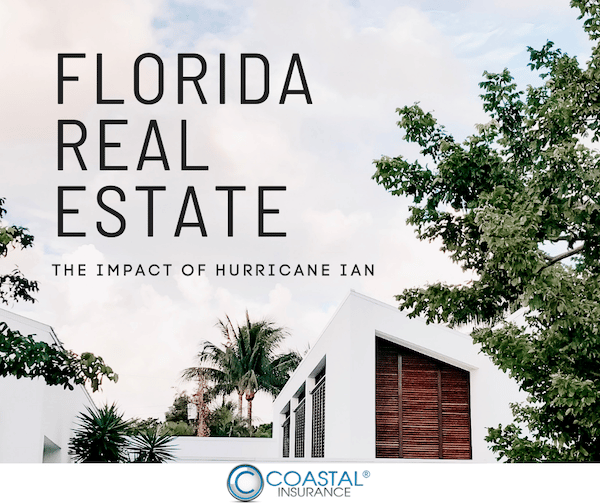Compare Prices & Start Saving Today!
Common Homeowners Insurance Discounts
New Homes may enjoy discounts up to 14%.
Security Systems such as deadbolt locks, simple alarm systems, and smoke detectors may reap discounts from 1-5%. Sophisticated monitoring services and integrated sprinkler systems may reduce your premiums as much as 20%.
Combined Policies: If you combine your automobile and homeowner policy with the same carrier you may obtain discounts from 5% to 15%.
Carrier Longevity: If you maintain your coverage with the same carrier for a number of years they will usually reward you with a discount.
Retired Homeowner: On average stays home longer and may be rewarded with a 5% discount.
Non-smoker: Some carriers reward non-smokers a 5% discount.
Verified Google Reviews
Home Insurance Woodside NY
Coastal Insurance Solutions knows how to get the people of Woodside, New York the best deals on homeowners insurance. We work with so many companies that we know how to select the best provider for your family based on our own claims experience. We can send you ten free proposals to look over and you can see for yourself why we are the authority when it comes to homeowners insurance. We help our customers to review various providers’ ratings and prices using our market search tool to select the best option for you. We know that owning a home is such a large and precious investment, and protecting your assets is our top priority.
To find out more, call us, or fill out the completely secure information form to get a great price today.
Get 10 FREE QUOTES from Top-Rated Insurance Companies
Homeowners Insurance Basic Coverages
Coverage A: Dwelling
Dwelling coverage covers the cost of rebuilding the house itself using like materials. This coverage also includes any permanent attachments, including central air conditioning equipment, heating and plumbing equipment, and similar attached items.
Coverage B: Other Structures
Fences, pools, gazebos, sheds, and other structures that are not attached to your home are covered by Coverage B, other structures coverage. The value of this coverage is usually set to 10% of the dwelling coverage amount but can be changed to a higher coverage amount if needed.
Coverage C: Personal Property
Personal belongings are described as personal property on your home insurance policy. This coverage would include common household items like televisions, furniture, clothing, and other common belongings. Personal property coverage is usually assigned a value of at least 50% of the dwelling coverage on a homeowners insurance policy, but this coverage amount can often be adjusted.
Many homeowners insurance policies cover personal property on an actual cash value basis. What this means is that if your personal property is lost, damaged, or destroyed in a covered claim, your insurer will pay a depreciated value based on wear and tear due to age. Some insurers provide an option for personal property coverage at replacement cost value, which covers your personal property for the full cost of replacement, typically for a slightly higher premium.
Certain types of items, such as jewelry, firearms, furs, and similar items have limited coverage on a homeowners insurance policy. These items can be added to your policy as an endorsement to insure them to their full value.
Coverage D: Additional Living Expenses
If a covered claim forces you out of your home temporarily while your home is being repaired, additional living expenses are covered by Coverage D. This can include the cost of hotels or of eating out and this coverage is designed to cover the difference between your normal living expenses and the higher temporary expenses you experience due to a claim. Typically, Coverage D is equal to 20% of the coverage amount for Coverage A, dwelling coverage.
Coverage E: Personal Liability
Coverage E, commonly known as personal liability coverage, protects you against lawsuits for bodily injury to others or damage to the property of others due to negligence. Coverage amounts typically start at $100,000, although most policies provide $300,000 of coverage or higher. Personal liability coverage on your home insurance also pays for your legal defense, which can be a sizable expense in itself.
Common risks include dog bites and slip and fall accidents, but accidental damage to the property of others is also covered.
Households with pools or children who have friends who visit your home may wish to consider a higher coverage amount. This coverage is available for all family members in the household.
Coverage F: Medical Payments
Your home insurance policy also provides coverage for small injuries to others that don’t involve a lawsuit. Accidents can happen, but many accidents are minor, only requiring basic medical attention.
Get 10 FREE QUOTES from Top-Rated Insurance Companies
All Risk vs. Named Peril
A homeowners insurance policy can be either an all-risk policy or a named peril policy, with the difference between the two being which risks to your home are covered by the policy. As its name suggests, an all-risk policy is more inclusive, providing coverage for almost all risks to your home except for specifically excluded risks.
A named peril homeowners insurance policy only provides coverage for the home that is specifically named as coverage items on your policy. Named peril policies also have specific exclusions to coverage while also excluding any risks that are not specifically named as covered perils.
Covered personal property perils may differ from those covered for the dwelling, depending on the type of policy. The five types of policies for single-family homes are HO-1, HO-2, HO-3, HO-3 with HO-15, and HO-8.
HO-1 Basic Homeowner
A basic homeowners insurance policy, sometimes called an HO-1 policy, provides coverage for fire and lightning, as well as wind and hail damage — but being a basic insurance policy, omits coverage for several other risks to homes. Due to consumer demand for broader coverage, this type of policy is not commonly available from insurers.
HO-2 Broad Basic Homeowner
An HO-2 homeowners insurance policy expands upon the coverage provided by an HO-1 policy by adding some additional perils to the coverage for the dwelling: falling objects, roof collapse due to the weight of ice or snow, building collapse, water damage due to bursting pipes or sudden leaks, frozen pipes, and damage from electrical surges.
HO-3 Special Extended Homeowner
Currently the most popular type of homeowners insurance policy, an HO-3 policy provides all-risk coverage for your dwelling while providing coverage for 18 named perils for your personal property. All of the coverages provided by an HO-2 policy apply to personal property on an HO-3 policy. Covered perils for the dwelling itself are limited only by named exclusions.
HO-3 with HO-15 Comprehensive
This type of policy does not limit coverage for personal property to named perils, instead of covering both your home and personal belongings for all perils except for those specifically excluded from your policy. Depending on the insurer, a similar type of comprehensive coverage may also be available through an HO-5 policy.
HO-8 Modified Homeowner
Coverage for historic homes is often provided through an HO-8 homeowners insurance policy, which provides limited coverage similar to an HO-1 policy but is designed to cover homes that may cost significantly more to rebuild than their market value.
Homeowner Insurance Tips Video
Get 10 FREE QUOTES from Top-Rated Insurance Companies
Information about Woodside NY
Woodside is a working- and middle-class residential and commercial neighborhood in the western portion of the New York Cityborough of Queens. It is bordered on the south by Maspeth, on the north by Astoria, on the west by Sunnyside and on the east byElmhurst and Jackson Heights. Some areas are widely residential and very quiet, while others (especially closer to Roosevelt Avenue) are more urban. The neighborhood is located in Queens Community Board 1 and Queens Community Board 2.
At the turn of the 21st century, Woodside was finally seen to be built up. The neighborhood nonetheless continued to be seen as an attractive place to live—characterized by “wide avenues, leafy streets and a mix of private homes, small apartment buildings and the occasional towering co-op.” The population was about 1,800 in 1880, 3,900 in 1900, 15,000 in 1920, and 41,000 in 1930. By 1963 it had grown to about 55,600 and was 90,000 in 2000. In 2008 the chairman of the local Community Board said that large apartment buildings were replacing smaller ones and single-family homes were being converted into multifamily rental properties. At the same time, real estate brokers told a news reporter that interest remained strong among families looking for affordable housing near Manhattan.
As in other parts of New York City, centuries of tumultuous change have not totally obliterated old landmarks. Within Woodside, the double-decker station of the Long Island Rail Road (built in 1869) and the IRT Flushing Line (built in 1917) both remain, and were renovated in 1999. A trolley barn at Northern Boulevard and 51st Street has been preserved as the Tower Square Shopping Center. The New York and Queens Railroad Company built the barn in 1896. A transportation hub like the LIRR/IRT stations, it was the largest car barn in Queens. Woodside also possesses an ancient tree, not the great chestnut (which was gone by the end of the 19th century) but a large copper beech of somewhere between 150 and 300 years’ age. Documents in the archive of the Queens Historical Society suggest that it might have been planted during the time of the Revolutionary War. Among the oldest of Woodside’s historic landmarks are its cemeteries. Calvary Cemetery was founded in 1845 by trustees of Manhattan’s St. Patrick’s Cathedral for Roman Catholic burials and was later expanded by the addition of three sections comprising New Calvary. Calvary and New Calvary are very large. Their 300 acres contain over three million burials. Located on 54th Street between 31st & 32nd Avenues, the Moore-Jackson Cemetery is much older and smaller than Calvary. Established in 1733, it is one of the oldest cemeteries in New York. Only fifteen graves remain visible, the earliest dated 1769.
Although few have been documented, some of Woodside’s old buildings still remain in place. Of those for which information is available, Woodside’s first church, St. Paul’s Protestant Episcopal, holds pride of place. It was damaged by fire in 2007 but still stands in its original location. An article published on the Forgotten NY weblog in 2005 lists this and other interesting structures from 19th century Woodside which have survived. All are located close to the center of town. They include the Hook and Ladder Company (1884), the home of Otto Groeber and his family (1870), the Woodside Pavilion (1877), and Meyer’s Hotel (1882). Another article on this blog shows structures from the early 20th century that are still standing.









![IBA Top Retail Brokers 2024 Medal[88] IBA's Top Retail Broker 2023](https://coastalinsurancesolution.com/wp-content/uploads/2024/07/IBA-Top-Retail-Brokers-2024-Medal88.png)



